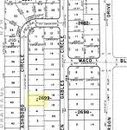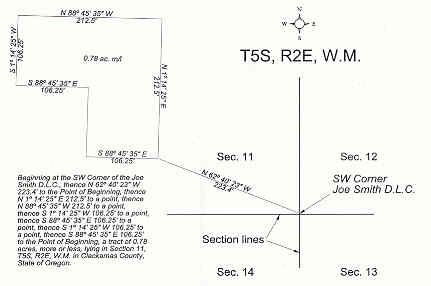

Range: the north to south area between two meridians.The principal parallel or baseline divides north and south townships. Parallel: the lines of the grid running east and west.The principal meridian serves as the midpoint dividing the east and west ranges. Meridian: the lines of the grid running north and south.The basic elements of the Rectangular Survey System include: Unfortunately, this system doesn’t work well with lots that are shaped irregularly, so metes and bounds or lot and block descriptions are often used in conjunction with the rectangular survey system. As the name implies, the system is based on a grid of uniform rectangles or squares using latitude (east and west) and longitude (north and south) lines. This method was adopted in the United States in 1785 to standardize surveying and replace the less accurate metes and bounds method. North 90 degrees east 325 feet, more or less, along the south line of Line of Smith Road, thence north 2 degrees east 200 feet, more or less,Īlong the east line of Smith Road to the south line of Route 199, thence Landmark, thence north 65 degrees west 500 feet, more or less to the east Route 199 and the middle of Saddle Creek, thence southeasterly along theĬenter thread of Saddle Creek 410 feet, more or less, to the oak tree


You’ll often see references to trees, rocks, bridges, rivers, and other bodies of water.Ī parcel of land located in Bucks County, Pennsylvania, having theįollowing description: commencing at the intersection of the south line of The description reflects the rudimentary tools used to measure the land at the time. “Metes” means distance and direction, while “bounds” refers to the fixed points like artificial monuments or natural landmarks. The metes and bounds method is the oldest of the three and was predominantly used by colonial settlers in New England and along the East Coast of the United States. Resolving errors with the legal description can delay a real estate closing and cost additional time and money, but ignoring them can jeopardize an owner’s claim to the land. If there’s a suspected issue with the legal description, the title company may require a land survey to confirm the legal description is accurate and it closes – meaning the starting point described in the legal description meets with the endpoint. To avoid inheriting an error, buyers should consider conducting a new land survey if one hasn’t been obtained recently. Human error when drafting a document or splitting a parcel of land may also cloud the title with an inaccurate legal description. Unplatted vacant properties often present the most prominent challenges related to legal description errors. However, old legal descriptions may be passed from one chain of title documents to another and an incorrect or incomplete description may be conveyed from one unwitting owner to the next. Surveys have become a far more precise science with GPS, drones, and planned community development. While relatively uncommon, a real estate document may contain an inaccurate legal description due to outdated surveying methods. Executing and recording other real estate documents.It also affects how the property is assessed and taxed. If a boundary dispute arises, the court will reference the legal description to determine if there are any encroachments or easements. The legal description clarifies exactly what parcel of land is conveyed to a new owner. A title insurance policy would be meaningless if you didn’t know what property it insures. The legal description provides accuracy and consistency over time, serves to prevent boundary disputes and problems with chain of title, and facilitates the transfer of ownership.


 0 kommentar(er)
0 kommentar(er)
